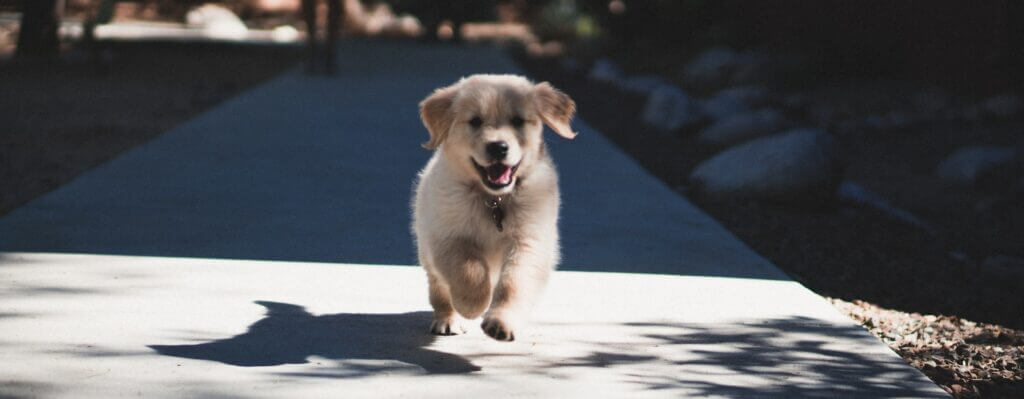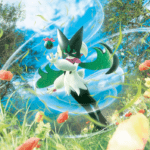Bringing a new puppy into your home is an exciting and joyful experience, but it also comes with a set of responsibilities and preparations. To ensure a smooth transition and create a safe and happy environment for your new furry friend, it’s essential to have a plan when becoming a pet parent. A new puppy checklist, from basic supplies to training tools will help you cover all the bases for welcoming your new puppy into your family.
New Puppy Checklist:
1. Basic Supplies:
- ☐ Collar and ID Tag: Ensure your puppy wears a collar with an identification tag containing your contact information. Adjustable collars are more common.
- ☐ Leash: A lightweight, adjustable leash for walks and outdoor activities.
- ☐ Water Bowls and Food Dog Bowls: Stainless steel or ceramic bowls are durable and easy to clean.
- ☐ Quality Puppy Food: Consult your veterinarian for the best nutrition suited to your puppy’s breed and age.
- ☐ Comfortable Dog Bed: Provide a cozy bed for your puppy to rest and sleep.
2. Grooming Essentials:
- ☐ Brush and Comb: Depending on your puppy’s coat, choose a suitable grooming tool to prevent matting and reduce shedding.
- ☐ Nail Clippers: Keep your puppy’s nails trimmed to ensure their comfort and prevent injury.
- ☐ Shampoo and Conditioner: Use a mild, puppy-specific shampoo to keep your puppy clean without causing skin irritation.
- ☐ Toothbrush and Toothpaste: Start dental care early for good oral health.
3. Training Tools:
- ☐ Training Treats: Small, soft treats for positive reinforcement during training sessions.
- ☐ Training Pads: Helpful for housebreaking and accidents during the initial stages.
- ☐ Crate: A safe and comfortable space for your puppy to retreat to, aiding in house training.
- ☐ Chew Toys: Provide a variety of chew toys to satisfy your puppy’s natural teething instincts.
4. Health and Wellness:
- ☐ Veterinary Check-Up: Schedule a visit to the vet for a thorough health examination and vaccination schedule.
- ☐ Flea and Tick Prevention: Choose a suitable preventive measure recommended by your vet.
- ☐ Worming Medication: Follow your vet’s advice for deworming your puppy.
- ☐ First Aid Kit: Include items like bandages, antiseptic wipes and tweezers for minor emergencies.
5. Comfort and Entertainment:
- ☐ Toys: Offer a variety of toys to keep your puppy entertained and mentally stimulated.
- ☐ Blankets and Comfort Items: Familiar items can provide comfort during the transition period.
- ☐ Puppy-Proofing Supplies: Cover electrical outlets, secure loose cords and remove potential hazards from your puppy’s reach.
6. Identification and Microchipping:
- ☐ Microchip: Consider microchipping your puppy for added security in case they get lost.
- ☐ Registration: Ensure your puppy is registered with local authorities and complies with any necessary licensing requirements.
7. Socialization and Training Classes:
- ☐ Puppy Socialization: Expose your puppy to various environments, people and other animals for proper social development.
- ☐ Training Classes: Enroll in a reputable puppy training class to establish good behavior and obedience early on.
8. Puppy Insurance:
- ☐ Pet Insurance: Explore pet insurance options to help cover unexpected veterinary expenses.
9. Routine and Schedule:
- ☐ Feeding Schedule: Establish a consistent feeding routine.
- ☐ Potty Schedule: Take your puppy outside regularly, especially after meals and naps.
- ☐ Playtime and Exercise: Plan daily activities to keep your puppy physically and mentally stimulated.
10. Travel and Safety:
- ☐ Car Restraints: Invest in a secure restraint system for car travel
- ☐ Pet-Proofing Your Home: Remove potential hazards and secure dangerous items. A puppy gate can help protect your new friend.
11. Puppy-Proofing Your Yard:
- ☐ Secure Fencing: Ensure your yard is securely fenced to prevent escapes.
- ☐ Garden Safety: Remove toxic plants and secure any potential dangers.
12. Emergency Preparedness:
- ☐ Emergency Contacts: Have a list of emergency contacts, including your veterinarian and a 24-hour pet emergency clinic.
- ☐ Evacuation Plan: Create a plan in case of emergencies, including evacuation routes and a pet emergency kit.
13. Record Keeping:
- ☐ Health Records: Keep track of vaccinations, vet visits and any health concerns.
- ☐ Training Progress: Maintain a log of your puppy’s training milestones and achievements.
Get ready for a paws-itively awesome adventure as you welcome your new furry bundle of joy into your home! With this handy-dandy new puppy checklist, you’ll be all set to shower your little buddy with love and create a safe, cozy haven for them. Just keep in mind that every pup is one of a kind, so feel free to tweak the checklist to match your pup’s personal style.

How To Train A New Puppy
Training a new puppy requires patience, consistency and positive reinforcement. Here’s a basic guide to get you started:
- Start Early: Begin training as soon as you bring the puppy home, as early habits can be easier to establish.
- Basic Commands: Teach essential commands like sit, stay, come, and lie down. Use treats or praise as rewards.
- Positive Reinforcement: Reward good behavior immediately with treats, affection, or play. This reinforces positive actions
- Consistency is Key: Be consistent with commands, rewards, and rules. This helps the puppy understand what is expected.
- Potty Training: Establish a routine for bathroom breaks and praise the puppy when they go outside. Clean accidents thoroughly to eliminate odors.
- Socialization: Introduce the puppy to various environments, people, and other animals. This helps build confidence and reduces fear.
- Crate Training: Use a crate for sleeping and when you’re away. Dogs often view crates as safe spaces.
- Leash Training: Get your puppy used to a leash early on. Encourage walking without pulling, rewarding when they stay close.
- Handling and Grooming: Gradually introduce your puppy to being handled, including grooming tasks like brushing and nail trimming.
- Discourage Undesirable Behavior: Use a firm “no” and redirect the puppy to the correct behavior. Avoid punishment, as it can lead to fear or aggression.
- Training Sessions: Keep training sessions short and fun. Puppies have short attention spans, so end on a positive note.
- Seek Professional Help: If you encounter challenges or if your puppy shows signs of behavioral issues, consider seeking professional help from a trainer or behaviorist.
Each puppy is unique so tailor your training approach to their personality and needs. Building a strong bond through positive reinforcement will contribute to a well-behaved and happy adult dog.
New Puppy FAQ:
A: Start by puppy-proofing your space. Remove potential hazards, secure loose cords and create a designated puppy area with essentials like a cozy bed, water and dog food bowls and some chew toys.
A: Consult your vet for personalized advice, but generally, choose a high-quality puppy food appropriate for your pup’s breed and size. Feed them small, regular meals and monitor their weight and growth.
A: Puppies need a series of vaccinations, so frequent visits are common during the first few months. After that, an annual checkup is recommended to ensure your pup is healthy and happy.
A: Consistency is key! Establish a routine for feeding, potty breaks, and playtime. Supervise your puppy closely, reward good behavior, and be patient. Accidents happen, but positive reinforcement goes a long way.
A: Socializing is crucial! Introduce your puppy to various people, places, and other dogs early on. Gradually expose them to different environments to build confidence and reduce anxiety.
A: Provide plenty of appropriate chew toys to alleviate teething discomfort. Puppy-proof your home, and if they chew on something they shouldn’t, redirect their attention to a proper toy.
A: Begin basic training as early as possible. Teach commands like sit, stay and come. Positive reinforcement works wonders, so reward good behavior with treats and affection.
A: Puppies have lots of energy! Tailor exercise to their breed and size. Playtime, short walks and interactive toys are great ways to keep them active and engaged.
A: Regular grooming is essential. Brush your puppy’s coat, clean their ears, trim nails and introduce them to bath time early. This helps create positive associations with grooming activities.
A: Spend quality time together! Play, cuddle and communicate with your puppy. Be patient, consistent and loving. A strong bond forms through positive interactions and mutual trust.













